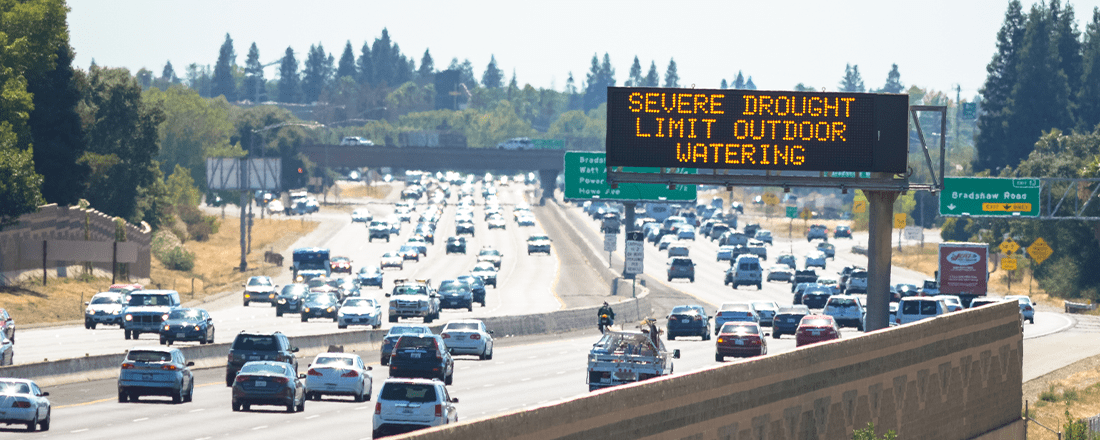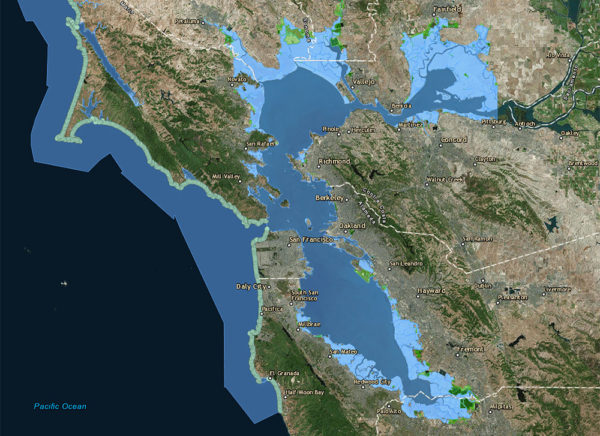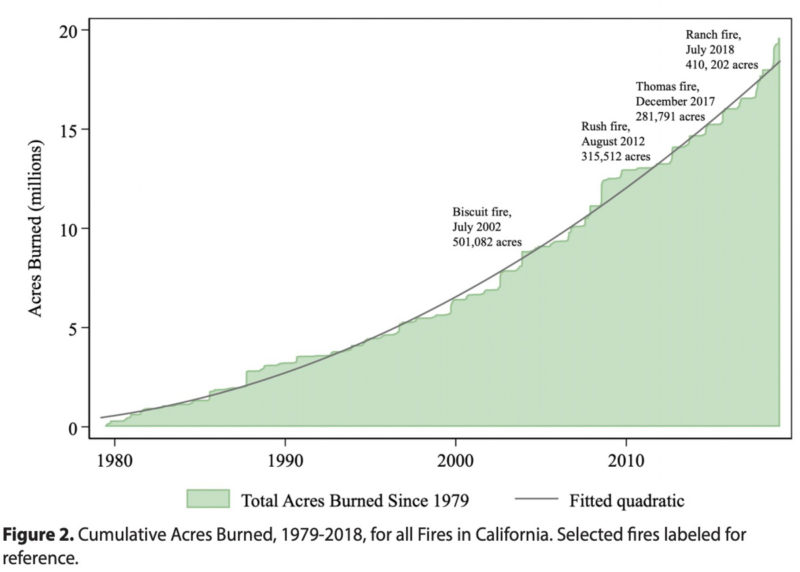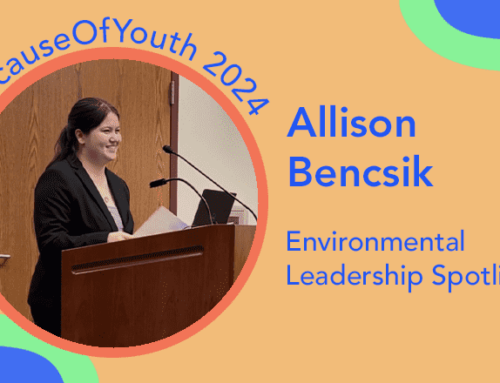Climate is affecting all of us. Communities and individuals around the world feel the repercussions of the climate crisis in different ways. Here are some ways that climate change is already impacting communities in the Bay Area, the changes we can expect in the coming years, and what you can do about it.
Climate Change and Your Community
Sea Level Rise
Climate change causes sea level rise through melting ice sheets and glaciers, and the expansion of water as it warms. Scientific models show that the water level in the San Francisco Bay could increase by 1.9 feet by 2050 and 6.9 feet by 2100. A 6-foot sea level rise would put over 480,000 Californians at risk and damage 55% of California coastal habitats. Over 104,000 jobs in the Bay Area will be put at risk or forced to relocate in the event of 4 feet of flooding.
Air Pollution
Exposure to air pollution leads to thousands of deaths and childhood asthma cases every year in the Bay Area. Elevated temperatures caused by climate change increase the prevalence of California wildfires and lead to an increase in ozone, both of which degrade local air quality.
Wildfires
Climate change increases the length and severity of the wildfire season. Between 1972 and 2018, the annual burn area in California saw a fivefold increase. Impacts on local communities range from health issues to economic instability. In the wake of the 2018 wildfire season, over 100,000 Californians were displaced from their homes. Wildfire smoke leads to eye and respiratory irritation, decreased lung function, bronchitis, asthma, and cardiovascular issues. High fire risk also means that Bay Area communities will be more likely to experience Public Safety Power Shutoff (PSPS) events which are conducted by PG&E in an effort to lower this risk.
Droughts
A 2020 study indicates that California may be entering the worst prolonged drought in over 1,200 years. Droughts negatively affect California’s agricultural sector, which is responsible for supplying over 25% of the nation’s food. Droughts have been increasing California food prices for years. It’s estimated that the 2015 drought raised fruit and vegetable prices by 3%, resulted in the loss of 10,100 seasonal jobs, and caused losses of $1.84 billion in direct costs. Decreased water supply may also lead to a higher water bill as resources dwindle.
What Can We Do?
Resilience Hubs
Resilience Hubs are facilities where community members can prepare for and support each other in the wake of climate emergencies. Resilience Hubs offer locally tailored solutions and resources to improve public health and reduce greenhouse gas emissions. For example, resilience hubs tailored towards communities impacted by wildfire season may offer resources such as air purifiers, masks, and power generators.
Energy Resiliency
Increased fire risk due to climate change represents a risk of power outages for customers throughout the state. MCE created a $6 million resiliency fund to help alleviate outages that threaten our community’s safety, health, and welfare, and which disproportionately affect vulnerable populations. Through partnerships with our local Centers for Independent Living (CILs), MCE provided portable batteries for 100 customers who depend on electricity for their medical and transportation devices, so that they can maintain power during outages and stay safely at home.
Local Control
Community engagement and empowerment is essential to address climate action equitably. Recognizing this, MCE is governed by a Board of Directors of elected officials, each of whom represent the communities they serve. Board meetings are always open to the public to provide opportunities for community members to provide input. MCE’s focus on local benefits provides increased access to programs and services like workforce development and local renewable energy projects like MCE Solar One. MCE Solar One, a 10 MW solar project in Richmond, maximized local benefits by requiring a 50% local resident workforce. The project is expected to eliminate 3,234 metric tons of CO2 each year.
Infrastructure Changes
Homes account for around one-third of U.S. greenhouse gas emissions and reducing energy use is imperative to fighting climate change. Qualified single-family homeowners and renters can receive a free energy-saving gift box and virtual home energy assessment through MCE’s Home Energy Savings Program. Commercial properties in MCE’s service area are also eligible for energy efficiency projects, including LED lighting, heating, ventilation, and air-conditioning (HVAC), refrigeration, and controls. MCE recently launched the Low-Income Families and Tenants (LIFT) Pilot Program to provide energy efficiency, electrification, and health, safety, and comfort upgrades to qualifying customers. MCE developed the LIFT Program to address large gaps in the energy efficiency market for income-qualified multifamily property owners and tenants.








